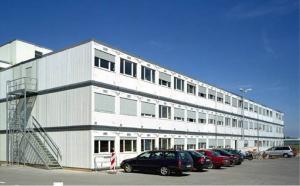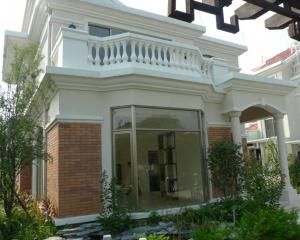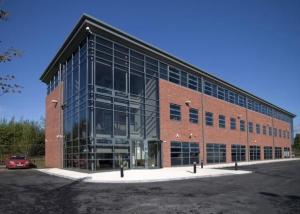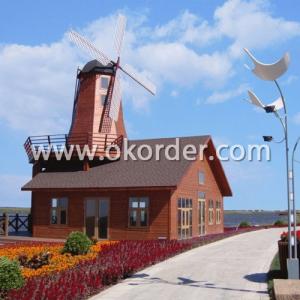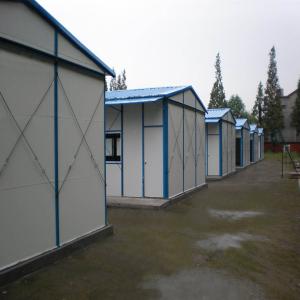Hospital Building
- Loading Port:
- China Main Port
- Payment Terms:
- TT or L/C
- Min Order Qty:
- 4 Set m²
- Supply Capability:
- 5,000 Set/ Month m²/month
OKorder Service Pledge
OKorder Financial Service
You Might Also Like
General Technical Description for Hospital Building
Basic Information of Hospital Building
| Place of Origin | Beijing, China (Mainland) |
| Brand Name | SWEET HOME |
| Model Number | S-C003 |
| Service time | 50 years |
Technical Parameter of Hospital Building
Size: GP20, GP40 and HP40 of shipping container
Wind Resistance: Grade 12
Wall permitted loading: 0.6KN/ m2
Ceiling Permitted live loading: 0.5 KN/m2
Wall Coefficient of thermal conductivity: K=0.442W/mk
Ceiling Coefficient of thermal conductivity: K=0.55W/ m2K
You are so welcome to send us inquiries!
Characters of Hospital Building
1) Good ability to assemble and disassemble for several times without damage.
2) Could be lifted, fixed and combined freely.
3) Heatproof and waterproof.
4) Cost saving and convenient transportation (Each 4 container house can loaded in one standard container)
5) Service life can reach up to 15 - 20 years
6) We can provide the service of installation, supervision and training by extra.
Dimensions and Weight of Hospital Building
Inner length /external length :5.81m/6.06m
Inner width /external width: 2.188m/2.438m
Inner height/external height:2,410m/2.591m
Weight: 2000kg per unit
Steel Framework of Hospital Building
Material: steel material Q235, thickness: 3.5mm for top beam frame. Base beam frame and column.
Surface working: epoxy painting,two bottom and two surface.
Fittings: 8 standard container corner mould fittings PVC standard rainwater pipe
Forklift openings: size 100*250mm, distance is 1200mm
Floor of Hospital Building
External wainscot: Flat galvanized color steel sheet, 0.5mm thickness
Floor structure: Girder made of 3.5mm steel. The purlin is C section steel. dimension 60x40x1.5mm.
Warm proof Insulation layer: 75mm rock wool
18mm bamboo plywood
2.0mm PVC floor leather for living rooms floor;
Ceiling of Hospital Building
Construction:
Roof exterior layer: 1.2mm steel plate with epoxy painting
Warm proof insulation filling: 75mm rockwool between C section purlins;
Inner wainscot: 8mm OSB board with 12mm PVC decoration board.
Roof water drain: 4 PVC rainwater pipes in the corner pillars, diameter 50mm
Walls of Hospital Building
Panel width: 1150mm; panel total thickness: 75mm, five panels fit into the long side and two panels fit into the short side.
Construction:
Common room wall: 75mm rockwool 0.4/0.4mm Galvanized
steel on both side , Desity of Rockwool: 120Kg/m3
Galvanize window opening on the wall if needed.
Door of Hospital Building
External door: Insulated with opening dimension 950*2100mm, furnished with lock
with 3keys. Inner door: Insulated steel door.
Windows of Hospital Building
Window material: PVC window with fly screen. Double glass, 4mm glass.
Electrical Fittings Option of Hospital Building
Electrical wire, 2.5mm2 for lighting system, and 4mm2 for AC units.
Main outlet and input industrial socket with 32A.
3 pcs 16A five hole universal socket.
2 pc double tube fluorescent lamp, 220V,50-60HZ
1 pc Single Switch, Honyar brand, with junction box
1 pc Electrical distribution box, box+breakers+earth leakage protective device
![]()
Optional Water System Fittings of Hospital Building
Water drain pipe, PPR pipe, dim 16-20mm, connection fittings are made of copper, life span over 10 years.
Exhaust fan or air exchange hole, size 250mm*250mm made of steel or PVC
Sanitary ware:
Western Close tool: ceramic, with pipes and installation fittings
Urinal: ceramic, with pipes and installation fittings
Wash basin: ceramic, with post, faucet, pipes and installation fittings
Shower head, Shower base, Water mixture
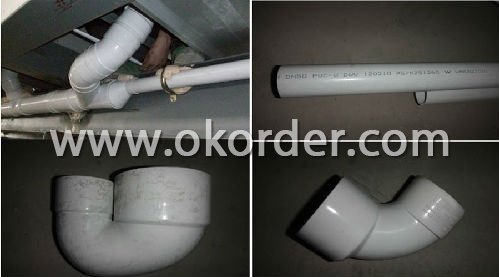
Packing method of Hospital Building
Flat packed as per downside pictures
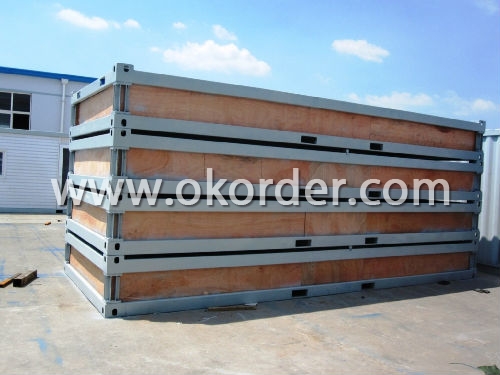
We would like to give fully support for your further inquiry!
- Q:Can container houses be built with a contemporary gym or fitness area?
- Certainly, container houses have the potential to incorporate a modern gym or fitness area. Their versatility allows for customization to cater to specific needs and preferences. By carefully strategizing and designing, it is entirely possible to modify a container house to include a designated space for a gym or fitness area. Container houses offer flexibility when it comes to layout and design. They can be easily expanded or modified to accommodate additional rooms or sections. With the use of multiple containers or alterations to the existing structure, it becomes feasible to create a separate area exclusively for a gym or fitness space. Various factors should be taken into consideration when designing a container house with a gym or fitness area. Ample space should be allotted for different gym equipment and exercises. Proper ventilation and lighting should be integrated to establish a comfortable and functional workout environment. Moreover, insulation and soundproofing measures might be necessary to ensure privacy and minimize noise disturbances. With meticulous planning and guidance from professionals, container houses can be transformed into contemporary living spaces with a dedicated gym or fitness area. This not only enhances the value and functionality of the house but also encourages a healthy and active lifestyle for its residents.
- Q:Are container houses easy to clean and maintain?
- Yes, container houses are generally easy to clean and maintain. The simplicity of their design and construction allows for easy cleaning and upkeep. The smooth surfaces of the containers make it easy to wipe away dirt, dust, and stains. Additionally, most container houses are designed with low-maintenance materials, such as metal or steel, which are durable and resistant to damage. This means that regular cleaning and maintenance is often all that is needed to keep the container house in good condition. Furthermore, container houses can be easily insulated and sealed to prevent pests and ensure proper climate control, reducing the need for extensive cleaning and maintenance. Overall, with regular cleaning and simple maintenance practices, container houses can remain clean and well-maintained for years.
- Q:How long does it take to build a container house?
- The length of time it takes to build a container house can vary depending on several factors. On average, a container house can be built within 2 to 4 months. However, this timeline can be influenced by factors such as the size and complexity of the design, the availability of labor and materials, the weather conditions, and the level of customization desired. If you opt for a basic and straightforward design, the construction process can be completed relatively quickly. This includes preparing the site, laying the foundation, modifying and assembling the shipping containers, and adding necessary utilities and finishes. In such cases, the construction can be finished within the shorter end of the 2 to 4-month range. However, if you have a more complex design in mind or require extensive customization, it might take longer to complete the construction. This could involve additional structural modifications, insulation, plumbing, electrical work, and interior finishes. The more intricate the design and the more customized features you incorporate, the longer the construction process may take. Furthermore, external factors such as obtaining necessary permits, inspections, and the availability of skilled labor and materials can also impact the overall timeline. Adverse weather conditions, such as heavy rain or extreme cold, can also cause delays in construction. Ultimately, it is crucial to consider your specific requirements, budget, and timeline when embarking on a container house project. Consulting with professionals and experienced contractors will provide a more accurate estimate of the time needed to build a container house based on your unique circumstances.
- Q:Do container houses require a building permit?
- Yes, container houses generally require a building permit. The requirement for a building permit varies depending on the location and local regulations. In most jurisdictions, any structure that is intended for habitation or permanent use, including container houses, must comply with building codes and obtain the necessary permits. These permits ensure that the structure meets safety standards, zoning requirements, and other regulations. It is important to consult with local authorities or a professional architect to determine the specific requirements and obtain the appropriate permits before constructing a container house.
- Q:Can container houses be built with multiple stories?
- Indeed, it is possible to construct container houses with multiple stories. Although shipping containers are typically employed for single-story buildings, they can also be stacked or merged to form multi-story container houses. This not only enhances flexibility but also maximizes the utilization of limited space. Nonetheless, it is crucial to take into account structural integrity and proper engineering in the design of multi-story container houses in order to guarantee the safety and stability of the edifice. Moreover, additional adjustments and reinforcements may be necessary to comply with building codes and regulations.
- Q:Can container houses be built with a traditional interior design?
- Yes, container houses can indeed be built with a traditional interior design. While container homes are often associated with modern or minimalist aesthetics, they can be customized to suit any style, including traditional interiors. With the right planning and design choices, container houses can incorporate traditional elements such as ornate moldings, classic furniture pieces, and vintage decor to create a warm and inviting traditional living space.
- Q:Are container houses suitable for remote education or homeschooling?
- Depending on personal preferences and circumstances, container houses can serve as a viable choice for remote education or homeschooling. These houses typically boast a small size and can be tailored to suit specific requirements, enabling the creation of a dedicated learning area within the home. One of the advantages of container houses for remote education or homeschooling lies in their affordability. Constructing a container house can be a cost-effective alternative to conventional homes, allowing families to save on housing expenses and allocate more resources towards education. Moreover, container houses can be easily customized and expanded as needed, providing flexibility for families with growing children or evolving educational needs. Furthermore, container houses are highly portable, enabling convenient transportation to different locations. This portability proves advantageous for families who prefer frequent travel or relocations while still maintaining a stable learning environment. This adaptability can be particularly beneficial for families engaged in remote work or seeking to expose their children to diverse cultures and experiences. However, it is important to acknowledge that container houses may have space limitations. Despite efforts to maximize available area through customization, accommodating multiple children or creating separate study spaces within a compact structure may present challenges. Therefore, careful planning of the interior layout and consideration of the specific educational needs of those involved are crucial. Ultimately, the suitability of container houses for remote education or homeschooling hinges on individual preferences, budget constraints, and the ability to adapt to a smaller living space. Families prioritizing affordability, portability, and creativity in designing their learning environment may find container houses to be a practical and distinctive option for remote education or homeschooling.
- Q:Are container houses suitable for artistic or creative spaces?
- Yes, container houses can be suitable for artistic or creative spaces. They provide a unique and unconventional design, allowing artists and creatives to customize and transform the space according to their needs and preferences. Additionally, container houses are often affordable and sustainable, making them an attractive option for those seeking an eco-friendly and budget-friendly creative space.
- Q:Can container houses be off-grid?
- Yes, container houses can be off-grid. One of the advantages of container houses is their flexibility, which allows for various sustainable living options. To achieve off-grid living, container houses can be equipped with solar panels to generate electricity. These panels can be installed on the roof or nearby to harness sunlight and convert it into usable energy. Additionally, container houses can incorporate rainwater harvesting systems to collect and store rainwater for everyday needs. Some container houses also utilize composting toilets and graywater recycling systems to minimize water usage. By combining these eco-friendly technologies, container houses can operate independently from the traditional power grid and water supply, making them an ideal option for off-grid living.
- Q:Are container houses suitable for remote or wilderness retreats?
- Yes, container houses are suitable for remote or wilderness retreats. They are durable, easily transportable, and can be customized to meet the specific needs of the retreat. Additionally, container houses are eco-friendly and cost-effective, making them a practical choice for remote locations.
1. Manufacturer Overview |
|
|---|---|
| Location | Beijing, China |
| Year Established | 2003 |
| Annual Output Value | Above US$ 15 Million |
| Main Markets | Mid East; Eastern Europe; North America |
| Company Certifications | ISO 9001:2008 |
2. Manufacturer Certificates |
|
|---|---|
| a) Certification Name | |
| Range | |
| Reference | |
| Validity Period | |
3. Manufacturer Capability |
|
|---|---|
| a)Trade Capacity | |
| Nearest Port | Tianjin; |
| Export Percentage | 50% - 60% |
| No.of Employees in Trade Department | 21-50 People |
| Language Spoken: | English; Chinese |
| b)Factory Information | |
| Factory Size: | Above 5,000 square meters |
| No. of Production Lines | Above 3 |
| Contract Manufacturing | OEM Service Offered; Design Service Offered |
| Product Price Range | Average |
Send your message to us
Hospital Building
- Loading Port:
- China Main Port
- Payment Terms:
- TT or L/C
- Min Order Qty:
- 4 Set m²
- Supply Capability:
- 5,000 Set/ Month m²/month
OKorder Service Pledge
OKorder Financial Service
Similar products
New products
Hot products
Related keywords
